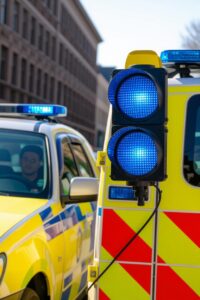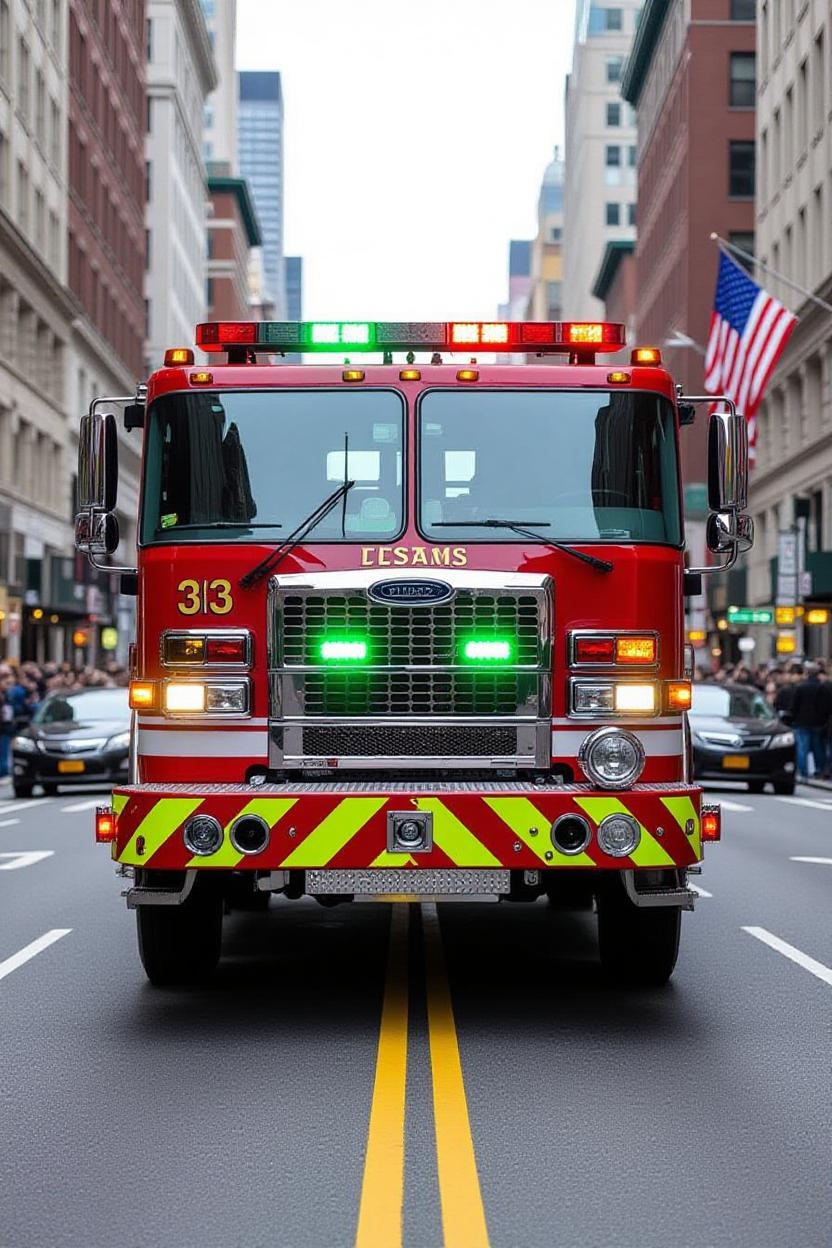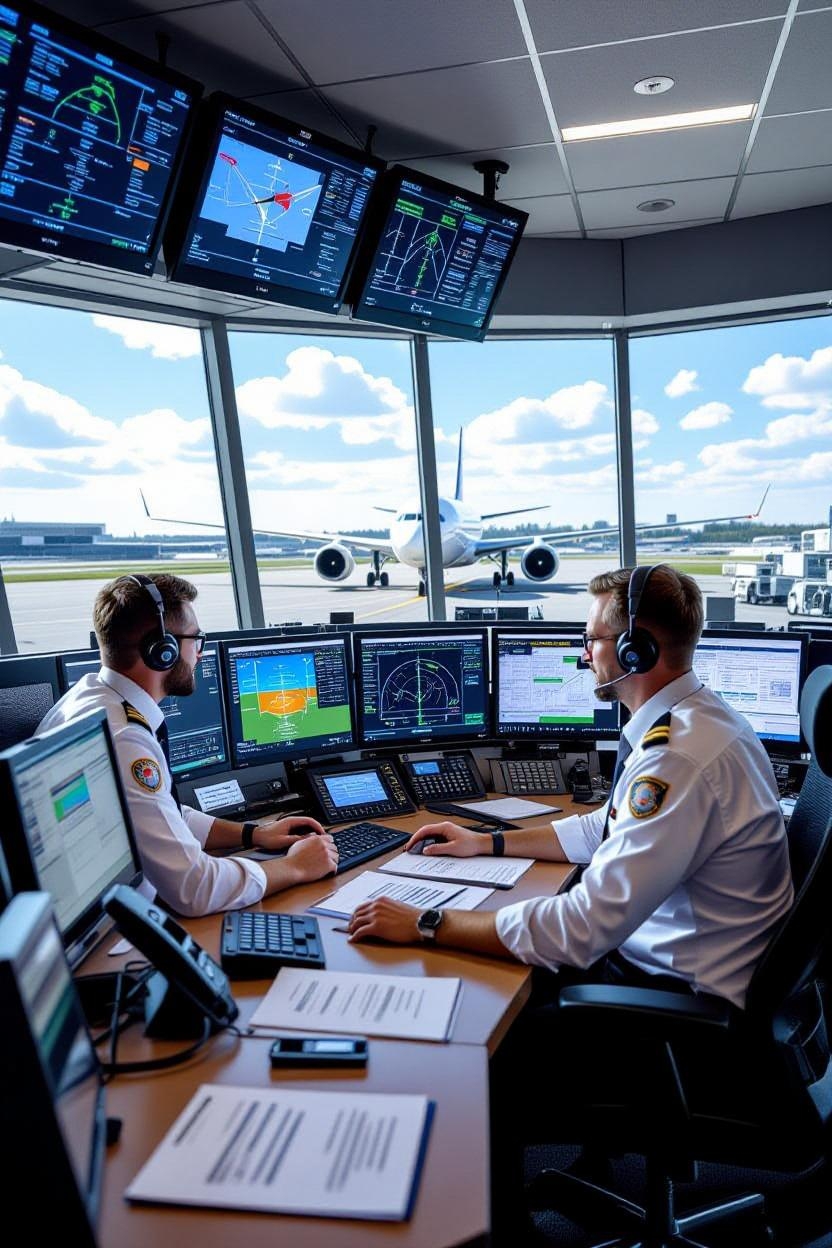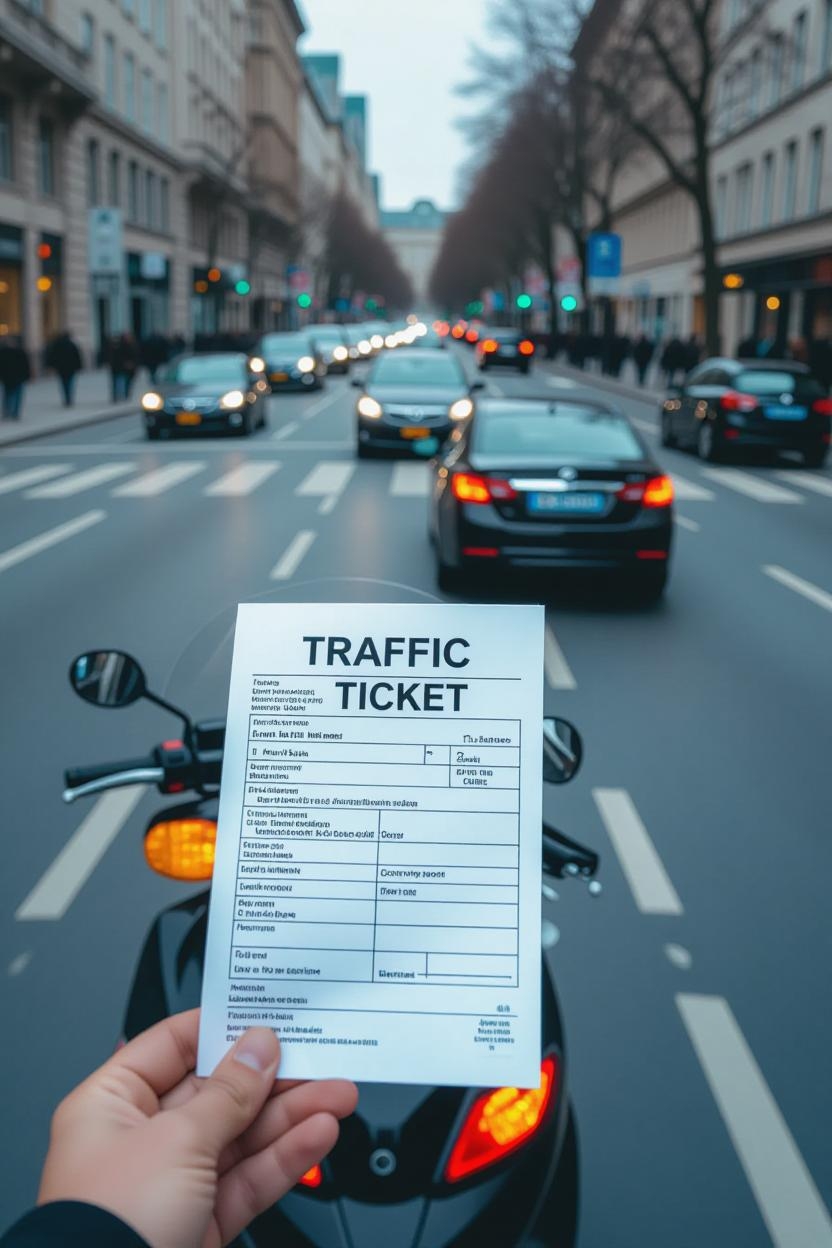Which Vehicle Will Use A Blue Flashing Beacon?
Theory question, which vehicle will use a blue flashing beacon? Blue flashing beacons are specialized lighting systems used on vehicles to signify urgency, authority, or specific operational roles.
Their use is tightly regulated and varies across jurisdictions, but they are distinct from other colored beacons (like green, red or amber) due to their association with emergency or high-priority functions.
Below is a detailed exploration of which vehicles will use a blue flashing beacons, their purposes, and how their application might differ across contexts, deliberately crafted to provide a unique perspective.
Which Vehicle Will Use A Blue Flashing Beacon?
The use of blue flashing beacons is primarily associated with vehicles that require immediate recognition on public roads or in specific operational environments. These vehicles typically fall into the category that uses a blue flashing beacon:

1. Law Enforcement Vehicles
- Who Uses Them: Police cars, motorcycles, and unmarked law enforcement vehicles (e.g., detective or special operations units).
- Purpose: Blue beacons signal authority and urgency, allowing police to navigate traffic quickly during pursuits, emergencies, or escorts. They also serve as a visual cue for public compliance, such as pulling over during traffic stops.
- Unique Context: In some countries, like Japan, police vehicles may combine blue and red flashing lights to differentiate between operational modes (e.g., patrol vs. emergency response). In covert operations, unmarked police cars may use discreet blue beacons mounted inside the vehicle (e.g., on the dashboard) to maintain a low profile until activated.
2. Emergency Medical Services (EMS)
- Who Uses Them: Ambulances, paramedic response cars, and rapid-response medical vehicles (e.g., critical care transport units).
- Purpose: Blue beacons indicate a medical emergency, enabling ambulances to bypass traffic and reach patients or hospitals quickly. They also alert other drivers to yield the right of way.
- Unique Context: In certain jurisdictions, private ambulances or volunteer medical responders (e.g., St. John Ambulance in the UK) may use blue beacons only when transporting critical patients, not for general operations. Some regions allow air ambulances (helicopters) to use blue beacons during ground operations at landing zones to ensure safety.
3. Fire and Rescue Services
- Who Uses Them: Fire engines, fire chief vehicles, and specialized rescue units (e.g., technical rescue or hazardous materials teams).
- Purpose: Blue beacons highlight the urgency of fire response or rescue operations, ensuring rapid access to incident scenes. They also warn other road users of large, slow-moving fire apparatus.
- Unique Context: In rural areas, volunteer firefighters may equip personal vehicles with blue beacons (e.g., in parts of the US or Germany), but only when responding to emergencies. This is less common in urban settings, where professional fire services dominate.
4. Specialized Government or Military Vehicles
- Who Uses Them: Bomb disposal units, military police, coast guard vehicles, or customs service vehicles.
- Purpose: Blue beacons denote high-priority operations, such as securing a site (e.g., bomb threat response) or patrolling restricted areas (e.g., ports or borders).
- Unique Context: In some countries, military vehicles with blue beacons operate under separate regulations, especially in non-combat zones or during joint operations with civilian authorities. For example, UK bomb disposal teams use blue beacons to clear traffic when transporting hazardous materials.
5. Utility and Highway Maintenance Vehicles
- Who Uses Them: Road maintenance crews, tow trucks, or traffic management vehicles (e.g., highway agency patrol cars).
- Purpose: Blue beacons (often combined with amber) indicate slow-moving vehicles or work zones, alerting drivers to potential hazards like road repairs or vehicle recovery.
- Unique Context: In countries like Australia, certain utility vehicles use blue beacons only when operating under emergency conditions, such as clearing debris after a storm. This contrasts with amber beacons, which are used for routine maintenance.
6. Other Specialized Vehicles
- Who Uses Them: Vehicles for blood transfusion services, mountain rescue, or airport emergency response teams.
- Purpose: Blue beacons signal urgent or life-saving operations, such as delivering blood supplies or responding to remote rescue missions.
- Unique Context: In the UK, blood bikes (motorcycles used for urgent medical deliveries) often use blue beacons to ensure timely transport of blood or organs. Similarly, airport crash tenders may use blue beacons during emergency responses to aviation incidents, distinguishing them from standard ground service vehicles.
How Blue Beacons Are Used Differently On Vehicles
Similar with green flashing beacon light, the application of blue flashing beacons varies significantly based on legal frameworks, cultural norms, and operational needs.
Jurisdictional Variations:
- In the European Union, blue beacons are almost exclusively reserved for emergency services (police, fire, ambulance) under strict regulations like the EU’s Directive 2007/46/EC on vehicle approvals. Private or utility vehicles rarely use blue lights alone, often combining them with amber.
- In the United States, blue beacons are often state-specific. For example, Pennsylvania allows volunteer firefighters to use blue courtesy lights on personal vehicles, but these do not grant right-of-way privileges, unlike police or ambulance beacons.
- In India, blue beacons were historically abused by VIPs and politicians until a 2017 Supreme Court ruling banned their use except for emergency services, highlighting a cultural shift in beacon usage.
Operational Modes:
- Some vehicles, like police cars in Germany, can switch between blue-only and blue-red combinations to indicate different levels of urgency or authority (e.g., blue for patrol, blue-red for emergency response).
- In maritime contexts, coast guard vessels may use blue beacons to signal law enforcement actions (e.g., intercepting illegal fishing boats), distinct from red or white lights used for navigation.
Temporary or Conditional Use:
- In certain scenarios, vehicles like snowplows or disaster response units may be granted temporary blue beacon privileges during declared emergencies (e.g., blizzards or floods), even if they typically use amber lights.
- In the UK, vehicles used by the National Police Air Service (helicopters) may use blue beacons on ground support vehicles only when coordinating with ground units, not during routine operations.
Psychological and Visual Impact:
- Blue beacons are chosen for their high visibility in low-light conditions and their psychological association with authority and urgency. Unlike red (often linked to danger) or amber (caution), blue commands attention without causing panic, making it ideal for police and medical services.
- In some countries, the flashing pattern (e.g., single flash vs. rapid strobe) is regulated to differentiate between vehicle types. For instance, UK ambulances use a specific flash pattern to distinguish them from police vehicles.
Regulatory and Legal Considerations Of Using Blue Flashing Beacon Light
The use of blue flashing beacons is heavily regulated to prevent misuse and ensure public safety:
- Permits and Licensing: Most countries require specific permits for blue beacon use, often tied to the vehicle’s registration and operator training. Unauthorized use can lead to fines, vehicle impoundment, or criminal charges.
- International Standards: The United Nations Economic Commission for Europe (UNECE) Regulation No. 65 standardizes blue beacon specifications (e.g., light intensity, flash rate) to ensure consistency across borders.
- Color Combinations: In some regions, blue is paired with other colors (e.g., blue-red for police in France, blue-amber for utility vehicles in Australia) to clarify the vehicle’s role.
Wrap Up On Blue Flashing Beacon Vehicles

Blue flashing beacons are a critical tool for vehicles requiring priority or visibility, primarily emergency services like police, ambulances, and fire trucks, but also specialized units like bomb disposal or blood delivery services.
Their use is governed by strict regulations that vary globally, with unique applications in different contexts (e.g., volunteer firefighters in the US or blood bikes in the UK).
By understanding the nuances of their deployment—such as jurisdictional differences, operational modes, and cultural factors—we gain a deeper appreciation for their role in public safety and infrastructure management.
Always consult local regulations to confirm which vehicles are authorized to use blue beacons in your area.


